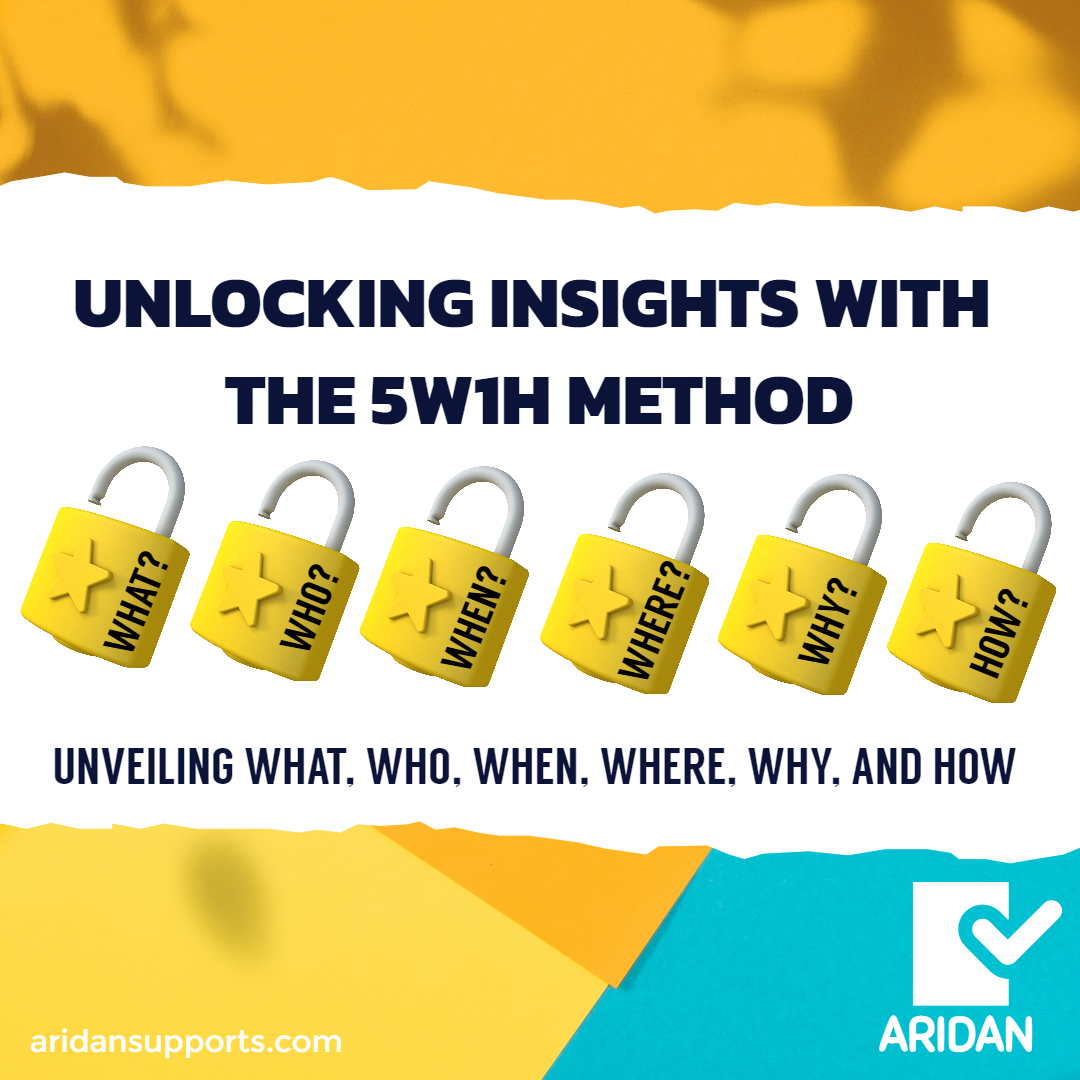“The Art of Probing,” also known as the 5W&TH or the 5W1H method, is a systematic and structured approach to inquiry. This method plays a pivotal role in Lean Management practices by facilitating problem elucidation through the crafting of a precise “Problem Statement” and elucidating process dynamics through the utilization of a SIPOC diagram.
DO YOU FIND THIS CONCEPT A BIT COMPLEX?
Before delving into the 5W1H method, let’s discuss lean management and SIPOC.
Lean management is a business strategy focused on enhancing customer value while minimizing waste. Rooted in the Toyota Production System (TPS), it fosters a culture of continuous improvement within an organization. The primary objective of Lean management is to boost efficiency and effectiveness by trimming non-value-adding activities and streamlining workflow.
SIPOC (Supplier, Input, Process, Output, Customer), on the other hand, is a schematic representation of your overarching process. SIPOC is used in the Lean Six Sigma DMAIC methodology. DMAIC is an acronym for the stages of the process improvement methodology, which stands for Define, Measure, Analyze, Improve, and Control. SIPOC serves as a guide to delineate all pertinent elements of a process enhancement initiative before undertaking any work.
SIPOC aids in clarifying aspects such as input suppliers, input specifications, process customers, and customer requirements. This tool is especially handy when questions arise regarding the origins of inputs, input criteria, the true beneficiaries of the process, and customer needs. Similar to Process Mapping, SIPOC offers additional granularity, facilitating project definition in complex scenarios.
ABOUT THE 5W1H METHOD
The essence of the 5W1H technique lies in its ability to unravel intricate details by exploring the Who, What, Where, When, Why, and How aspects of any given situation or challenge.
By employing this method, organizations can delve deeper into root causes, identify potential areas for improvement, and foster a culture of continuous enhancement. Through diligent application of the 5W1H methodology, teams can navigate complexities with clarity and precision, driving sustainable progress and fostering innovation.
The 5W1H Method consists of the following components:
- Who – Seek to Understand: Focus on comprehension rather than advocacy.
- What – Ask Open-Ended Questions: Encourage detailed responses.
- When – Ask Follow-Up Questions: Delve into temporal aspects for a complete understanding.
- Where – Paraphrase with a Closed-Ended Question: Utilize concise queries for location specifics.
- Why & How – Balance Asking & Telling: Maintain equilibrium between inquiry and explanation.
This method serves as a foundational Lean Management tool, contributing to problem-solving by answering fundamental questions regarding a situation. The 5W1H, also known as the Kipling method, is rooted in Rudyard Kipling’s approach to address queries and stimulate ideas for problem resolution extensively.
EMPLORING WHAT, WHO, WHEN, WHERE, WHY, AND HOW
The 5W1H method aids in comprehensive analysis through questions related to What, Who, When, Where, Why, and How.
Their strategic arrangement allows for a thorough examination of a situation, uncovering opportunities for improvement. More importantly, it contributes to the development of critical thinking. The sequence can be flexible, but it’s crucial to include the following:
- What: Describes the situation or problem, outlining the purpose of method usage.
- Who: Identifies relevant individuals or groups connected to the issue.
- Where: Specifies the location or position of the recognized issue.
- When: Includes temporal components, such as dates or timelines.
- Why: Explores the reasons and objectives behind the need for action, and root cause discovery.
- How: Outlines the steps and resources required for effective implementation.

In essence, employing the 5W1H method facilitates a systematic exploration of a situation, emphasizing critical information and aiding in problem recognition and solution generation. To illustrate its application in a business context let’s look at the following example:
Topic: Why did the company’s sales decline last quarter?
- What: The decline in sales figures for the last quarter.
- Who: The company’s sales team and management.
- When: During the last quarter.
- Where: In all regions where the company operates.
- Why: Potential reasons include increased competition, economic downturn, product quality issues, marketing challenges, or changes in consumer preferences.
- How: The sales team’s strategies, marketing efforts, and external factors might have contributed to the decline.
FINAL THOUGHTS
The 5W1H method and the 5 Whys problem-solving approach are versatile tools that can either be utilized interchangeably or in tandem, presenting a robust framework for dissecting and resolving issues, particularly within intricate contexts. These methodologies share a common objective of identifying prevailing challenges and devising effective remedies once the underlying causes are pinpointed.
However, a key distinction lies in their respective approaches. While the 5W1H method delves into various essential facets such as what, who, when, where, and how, alongside why, the 5 Whys technique systematically probes deeper into the underlying reasons behind a situation by posing the question “why” five times. This iterative process enables a gradual peeling back of layers until the fundamental cause is exposed.
In situations where complexities demand a more comprehensive analysis, the combined utilization of these methodologies presents an elevated likelihood of attaining clarity or achieving solutions to the problem at hand. By integrating the broad scope of the 5W1H method with the focused depth of the 5 Whys approach, organizations can navigate intricate challenges with a heightened level of precision and insight, ultimately leading to more effective problem resolution and sustainable improvement.
Sources
Businessmap. What Is Lean Management? Definitive Guide with Examples. Last accessed February 6, 2024.
Croft, D. Guide 5W1H Is/Is Not Problem Definition. Learn Lean 6 Sigma. Last accessed February 6, 2024.
Croft, D. Guide: DMAIC. Learn Lean 6 Sigma. Last accessed February 6, 2024.
Knop, K. and Mielczarek, K., 2018. Using 5W-1H and 4M Methods to Analyse and Solve the Problem with the Visual Inspection Process-case study. In MATEC Web of Conferences (Vol. 183, p. 03006). EDP Sciences. Last accessed February 6, 2024.
Changqing, G., Kezheng, H. and Fei, M., 2005. Comparison of innovation methodologies and TRIZ. The TRIZ Journal, Issue September 2005. Last accessed February 6, 2024.
Srirangam, N.C., A. February 2024. Improving Internal Audits Using the 5W1H Method. Internal Audit 360. Last accessed February 6, 2024.
Yusoff, N.M., Zakaria, N.A. and Harum, N., 2019. Problem analysis of RPL overhead in 6LOWPAN using 5W1H model. International Journal of Innovative Technology and Exploring Engineering (IJITEE), Volume-8 Issue-12, October 2019. p.5300-5305. Last accessed February 6, 2024.








